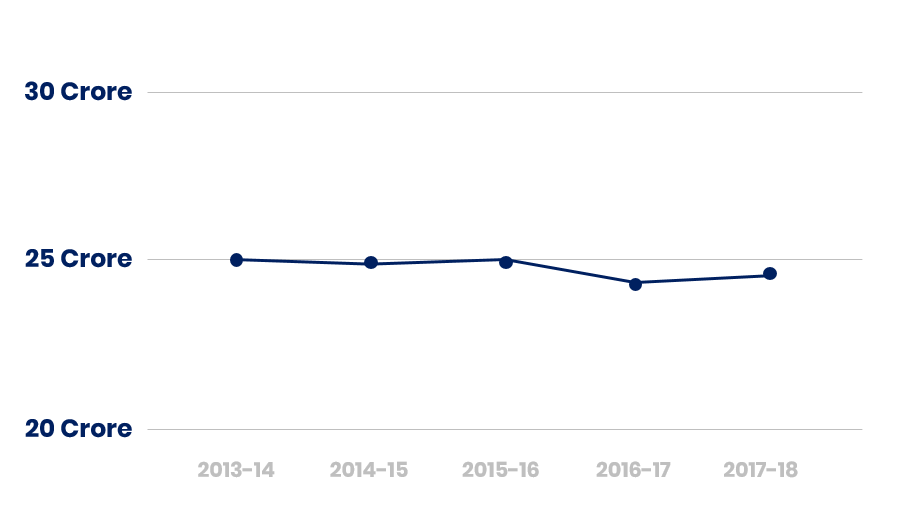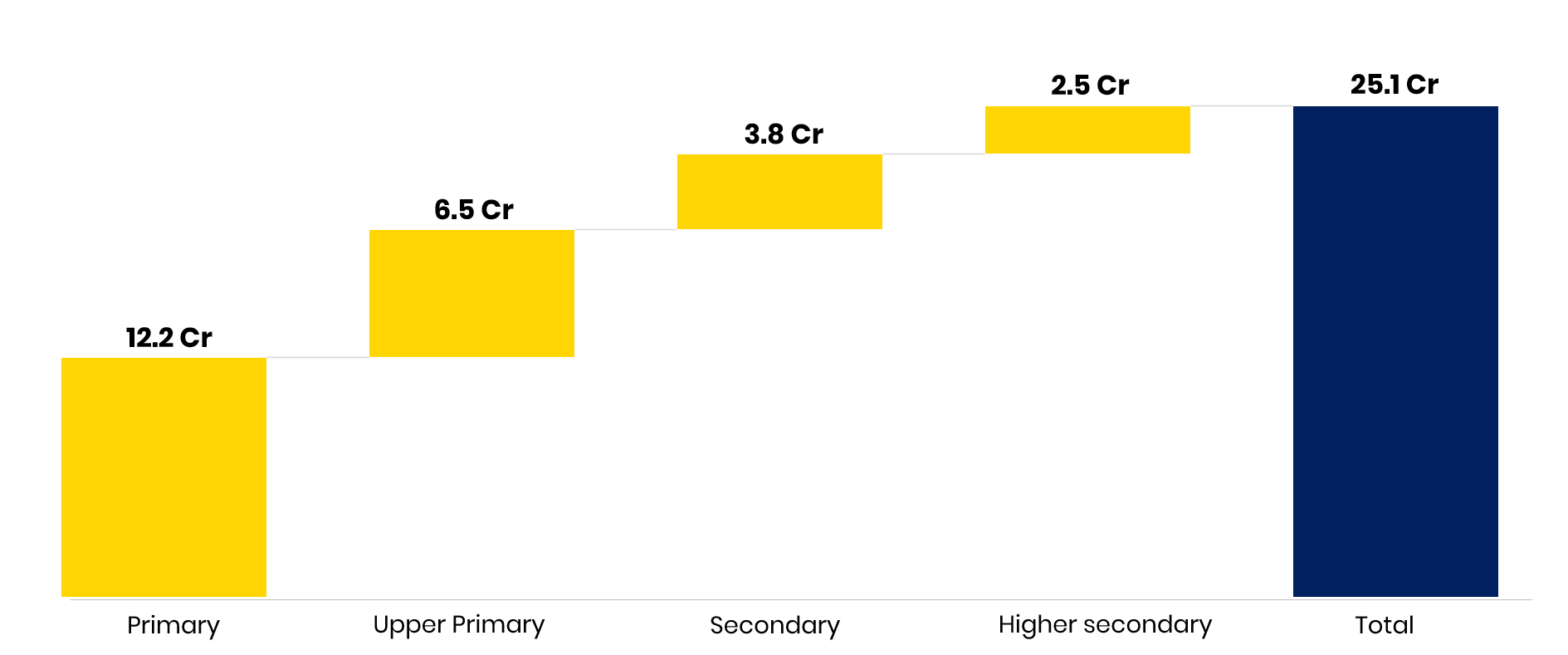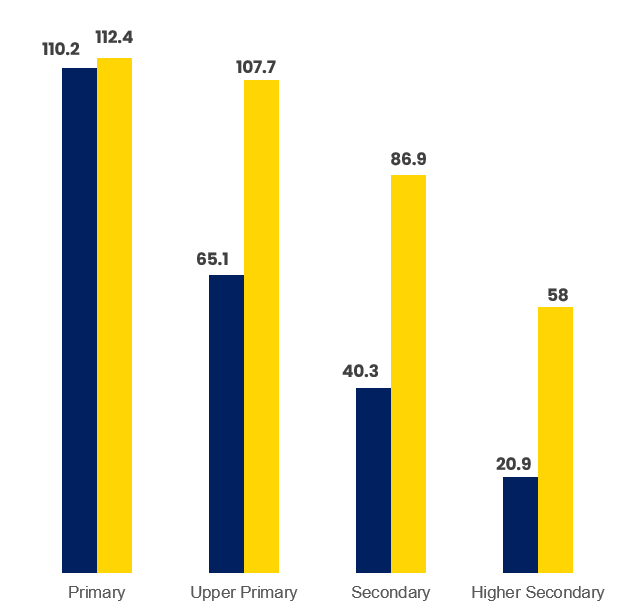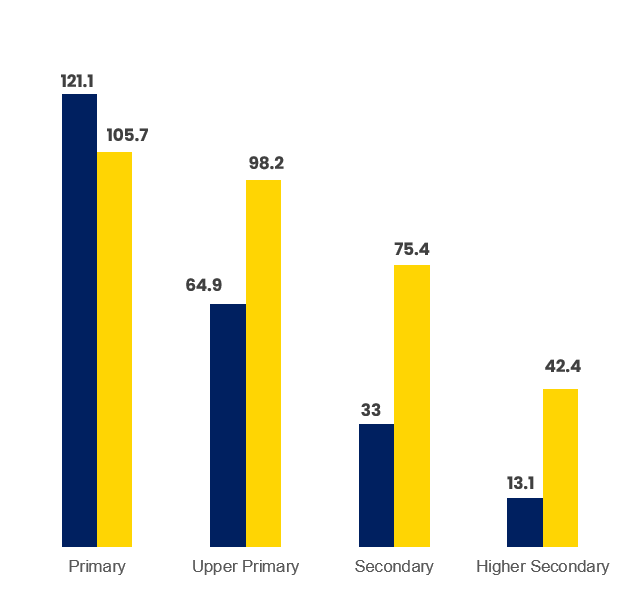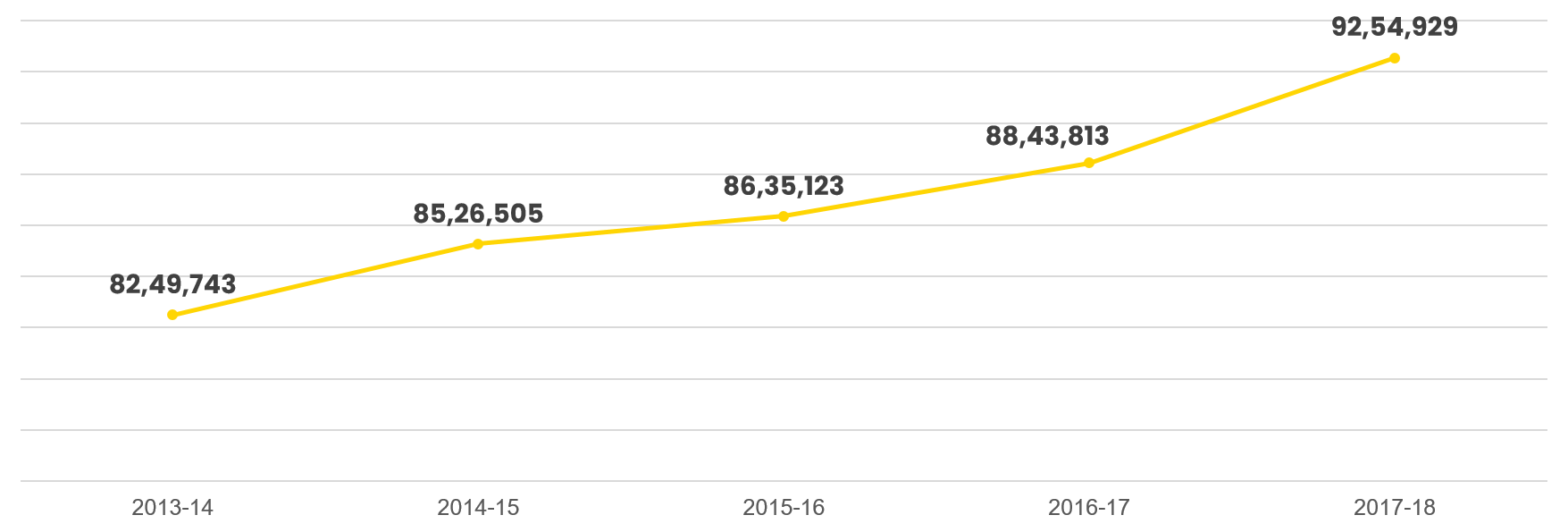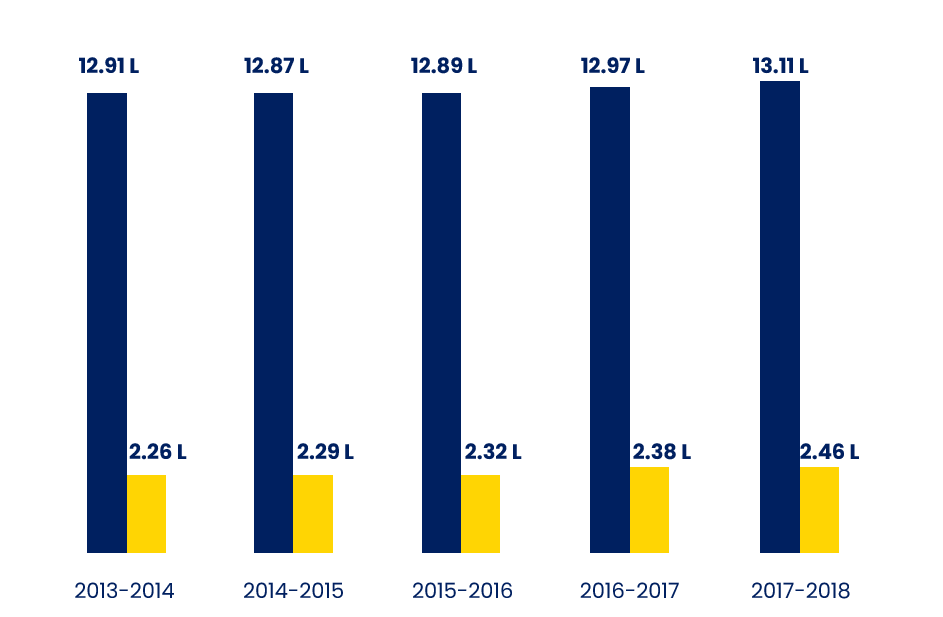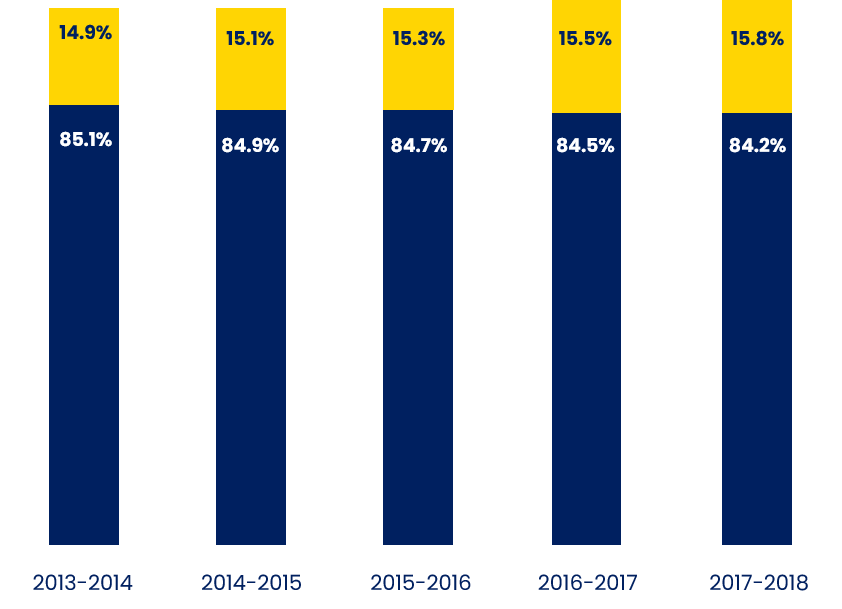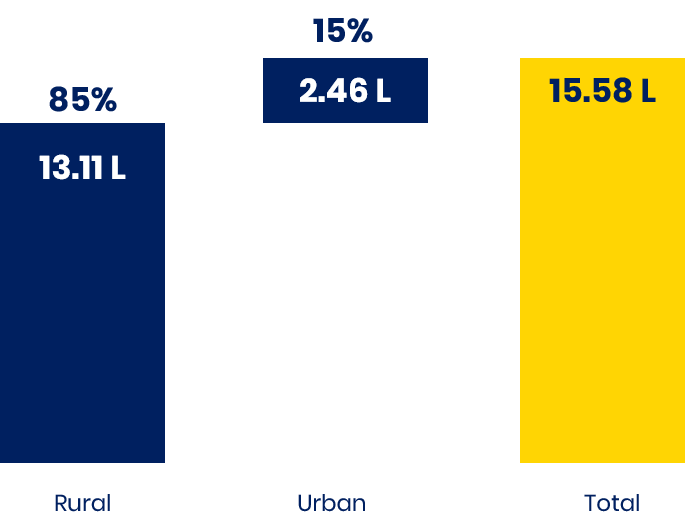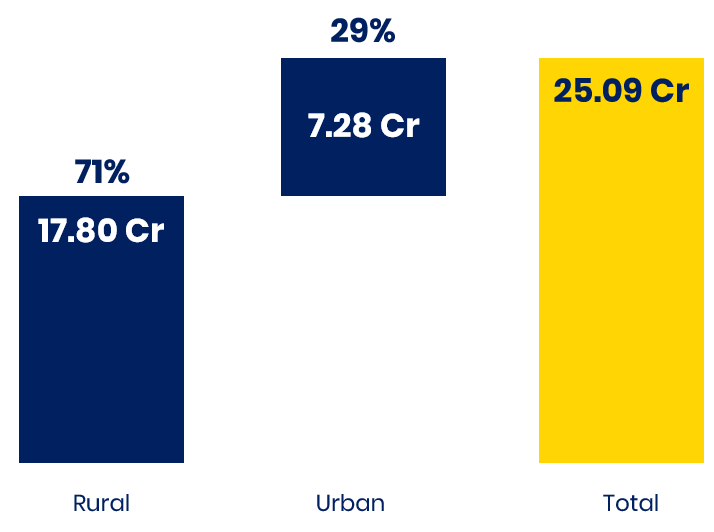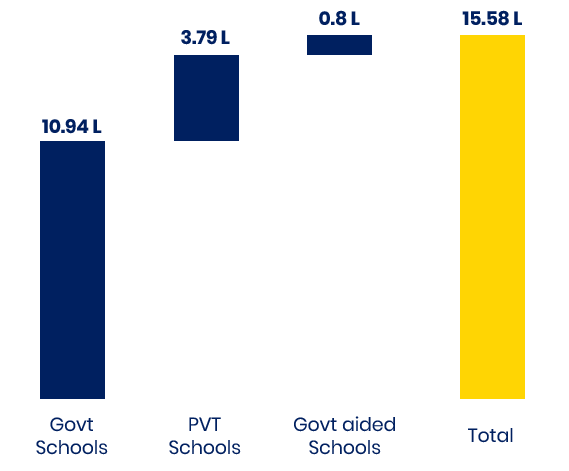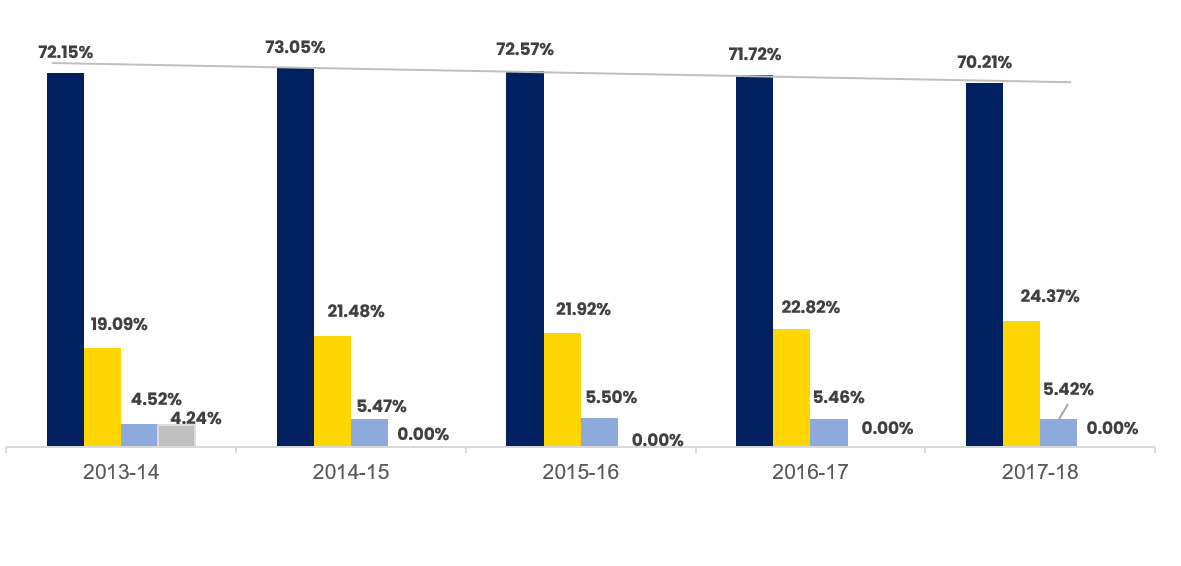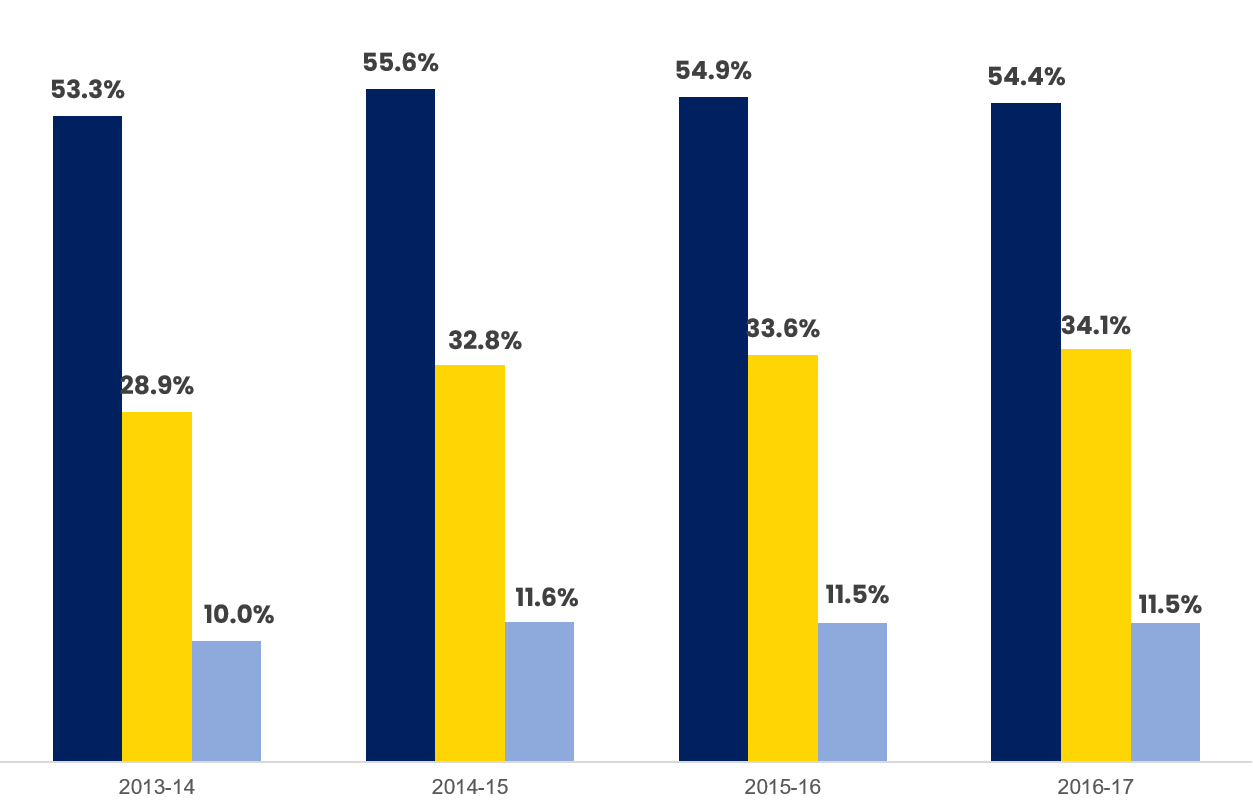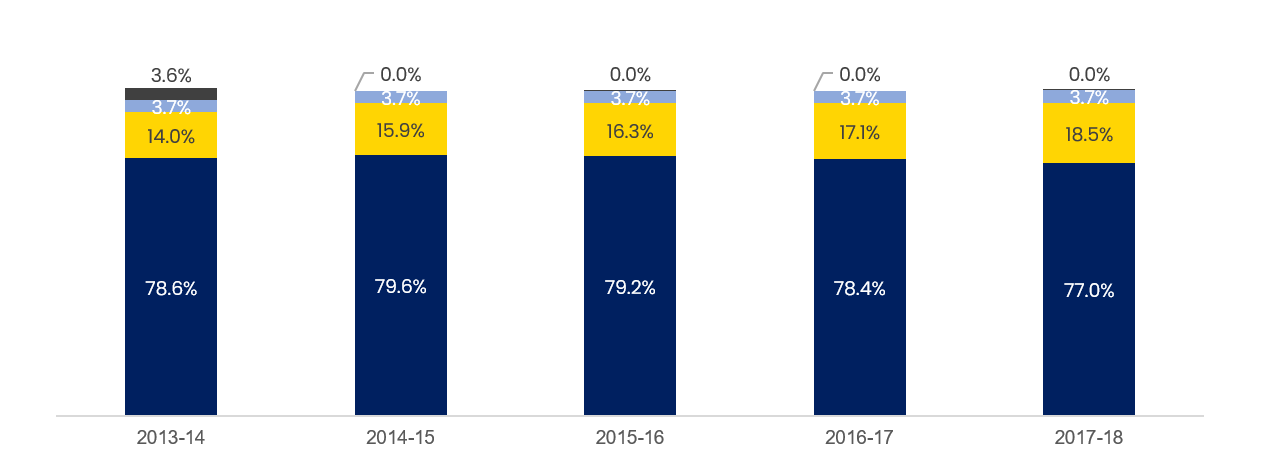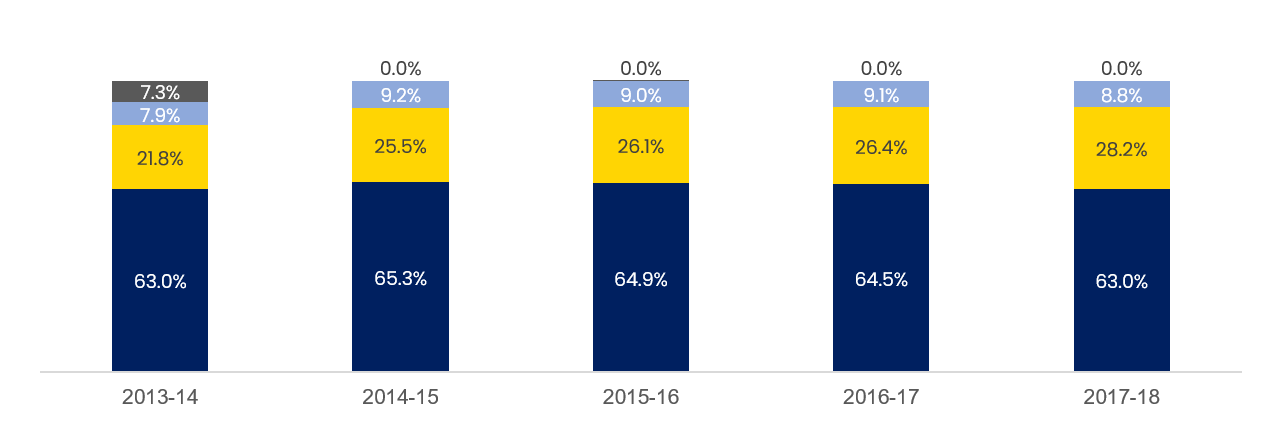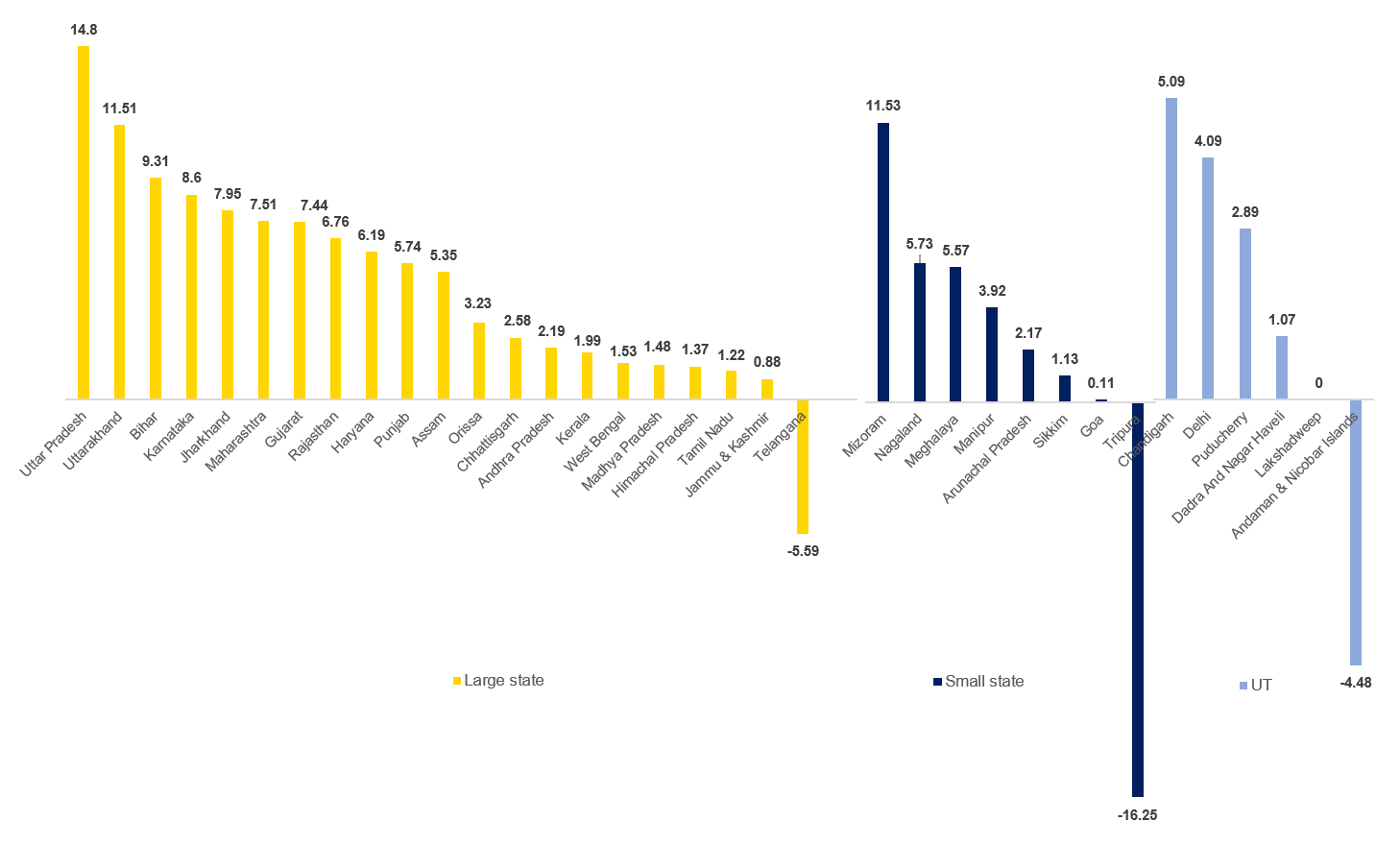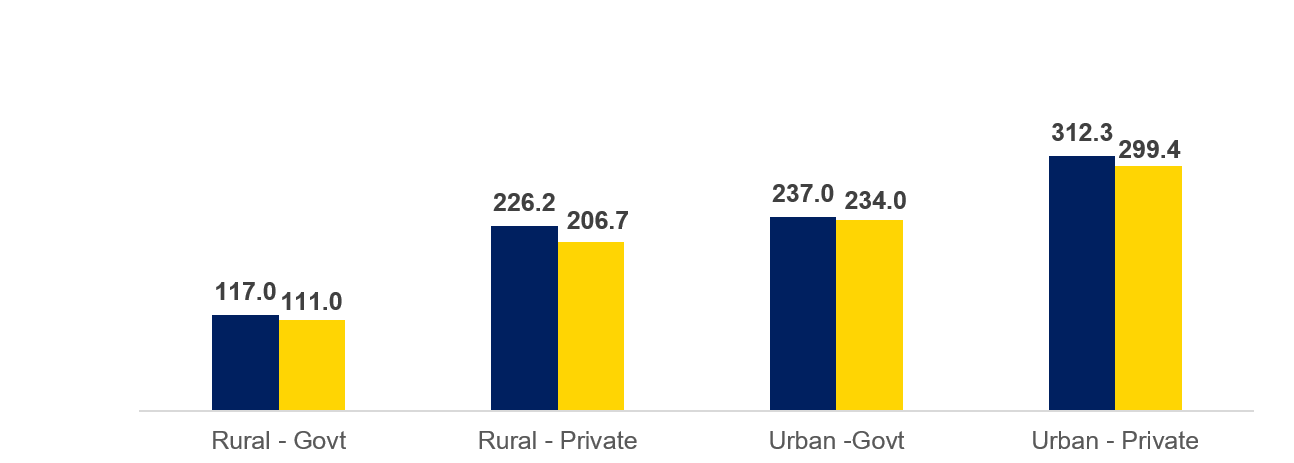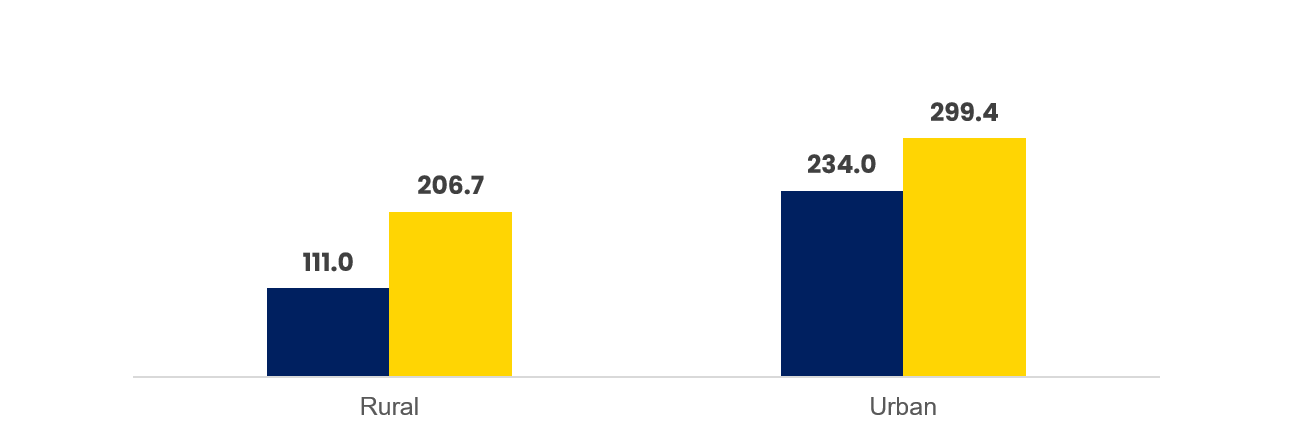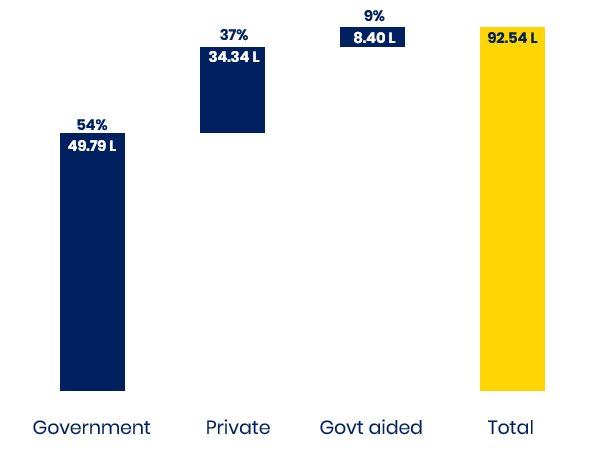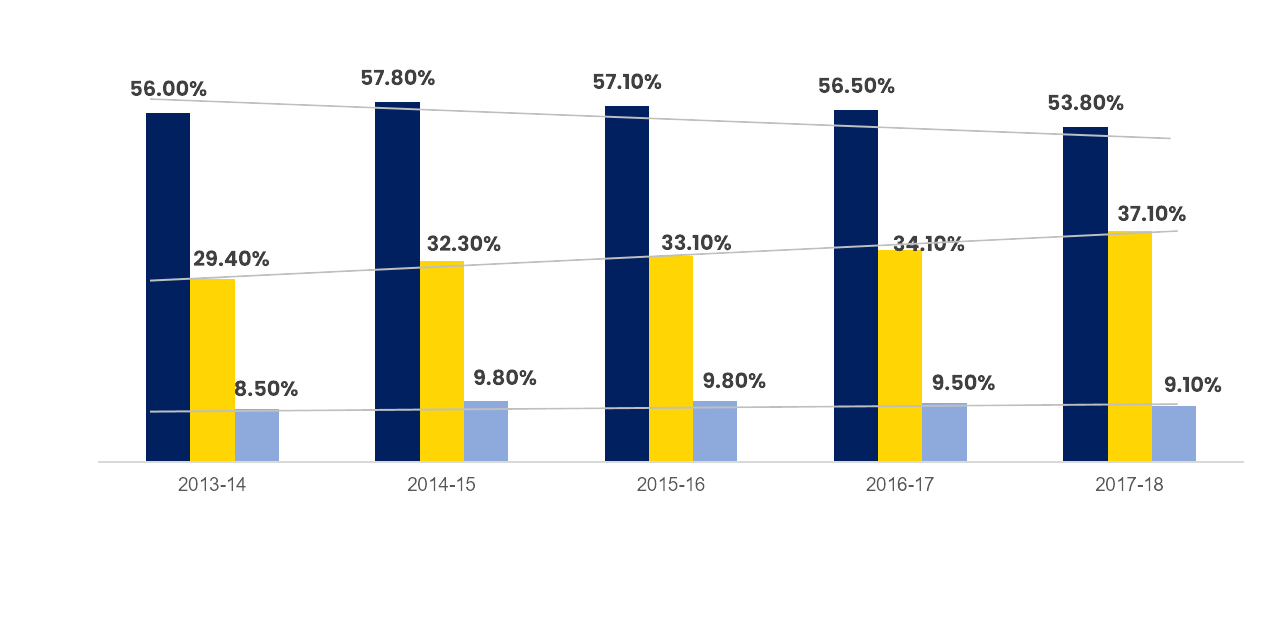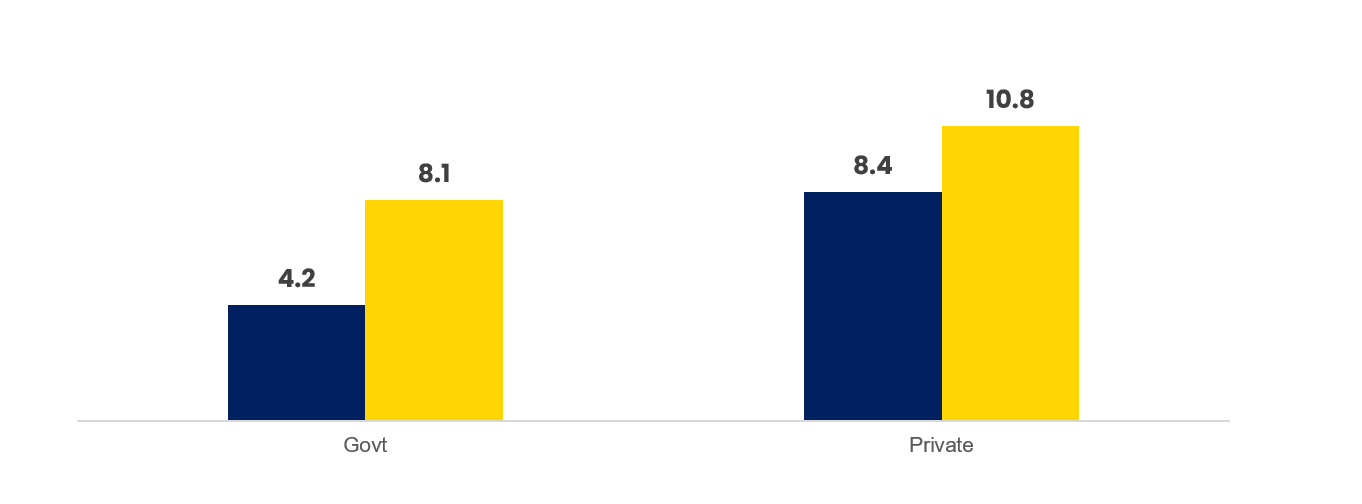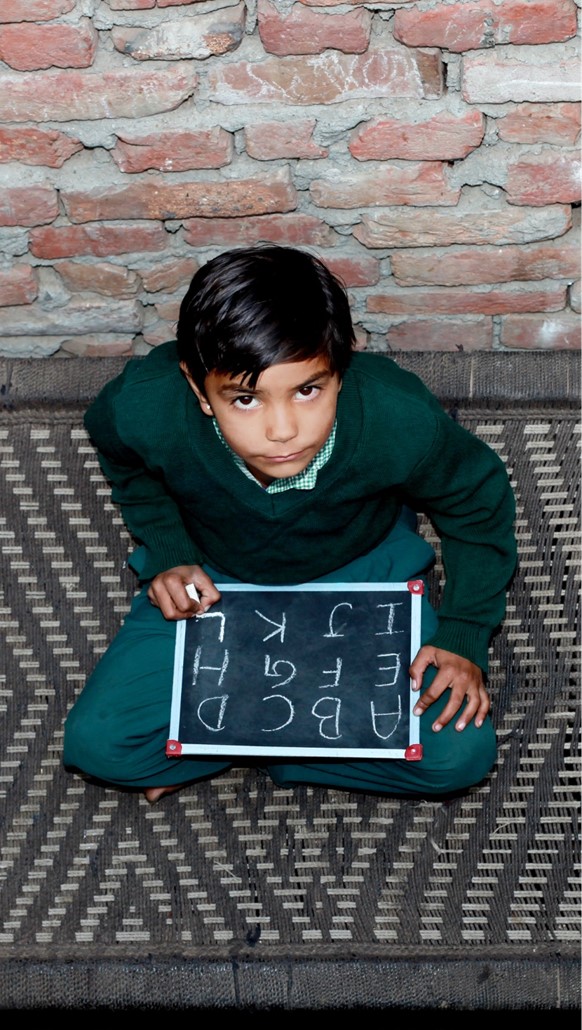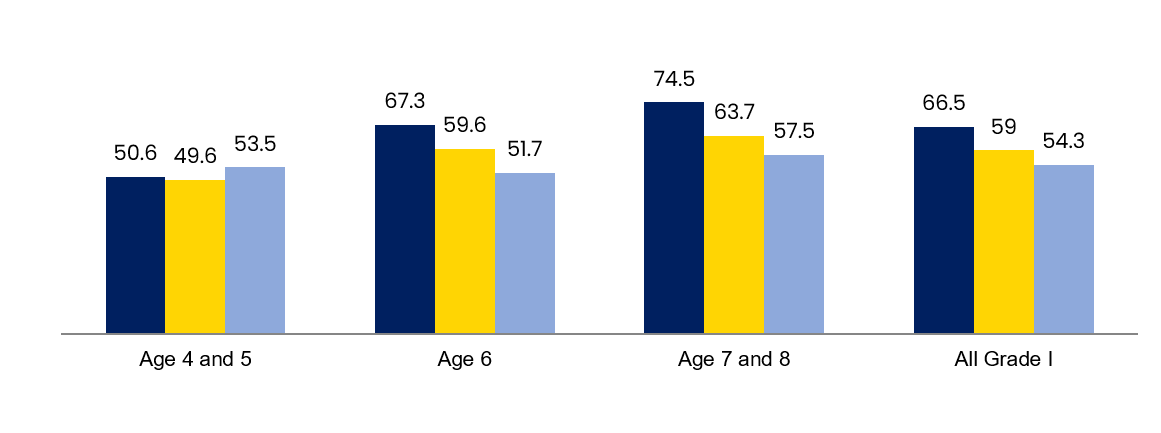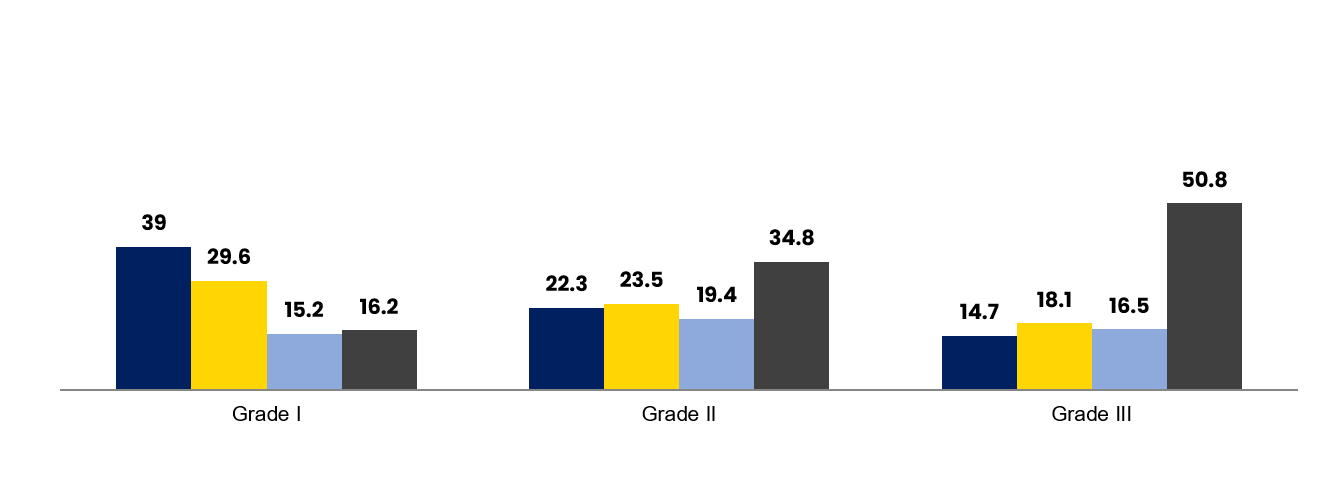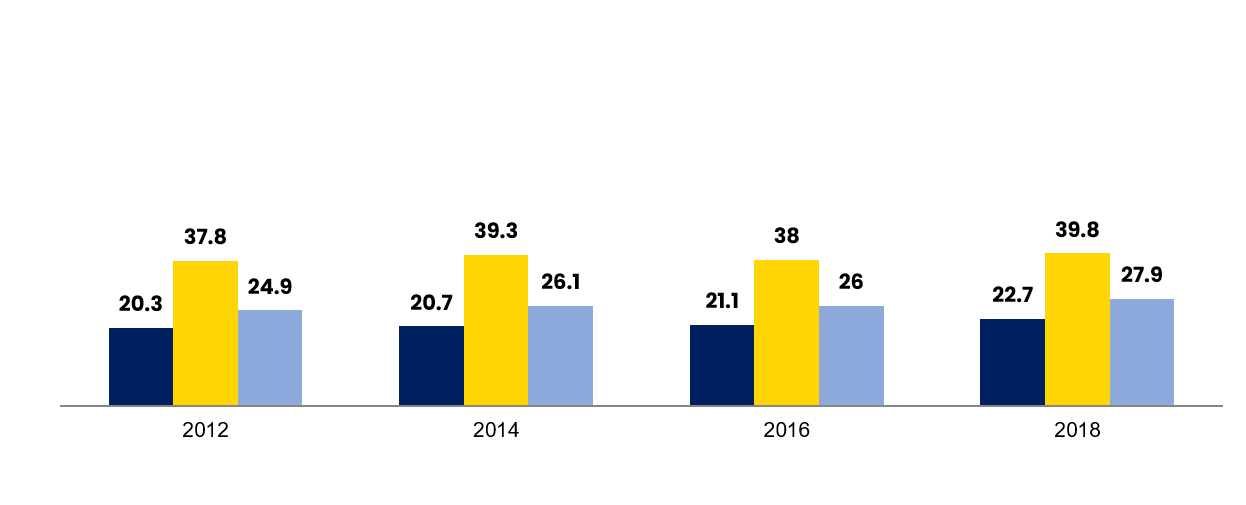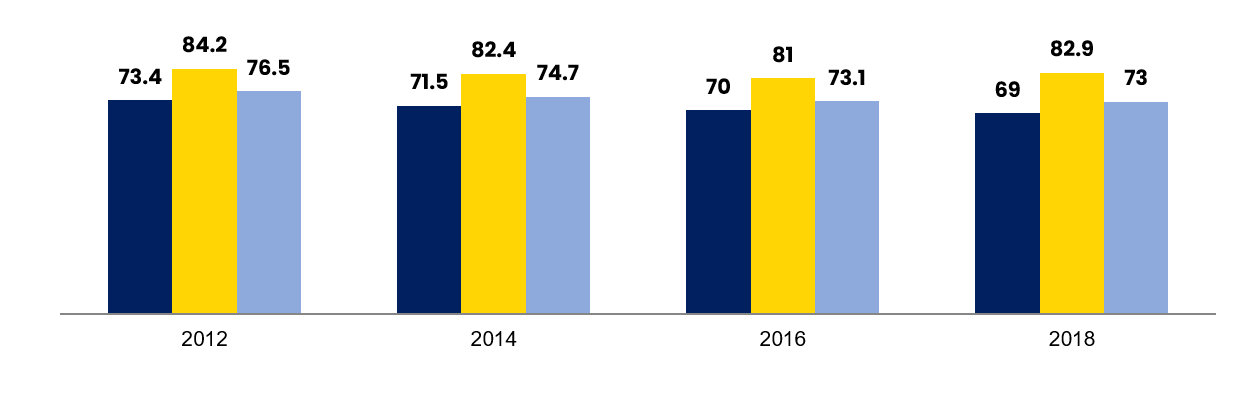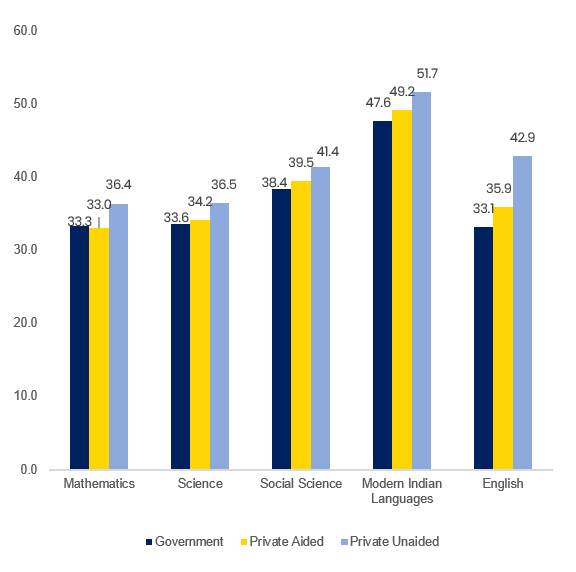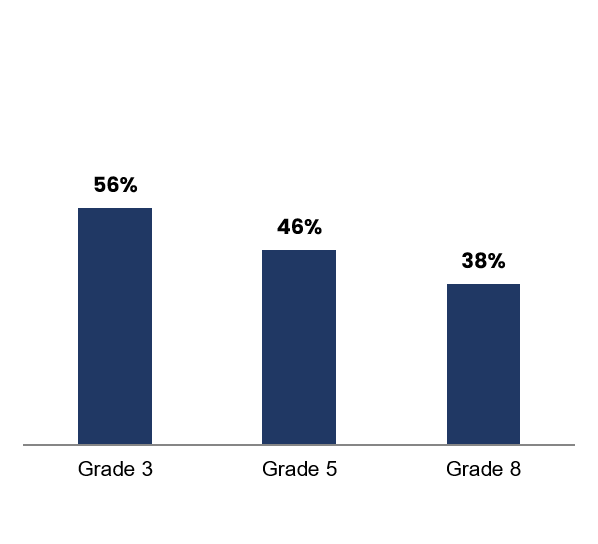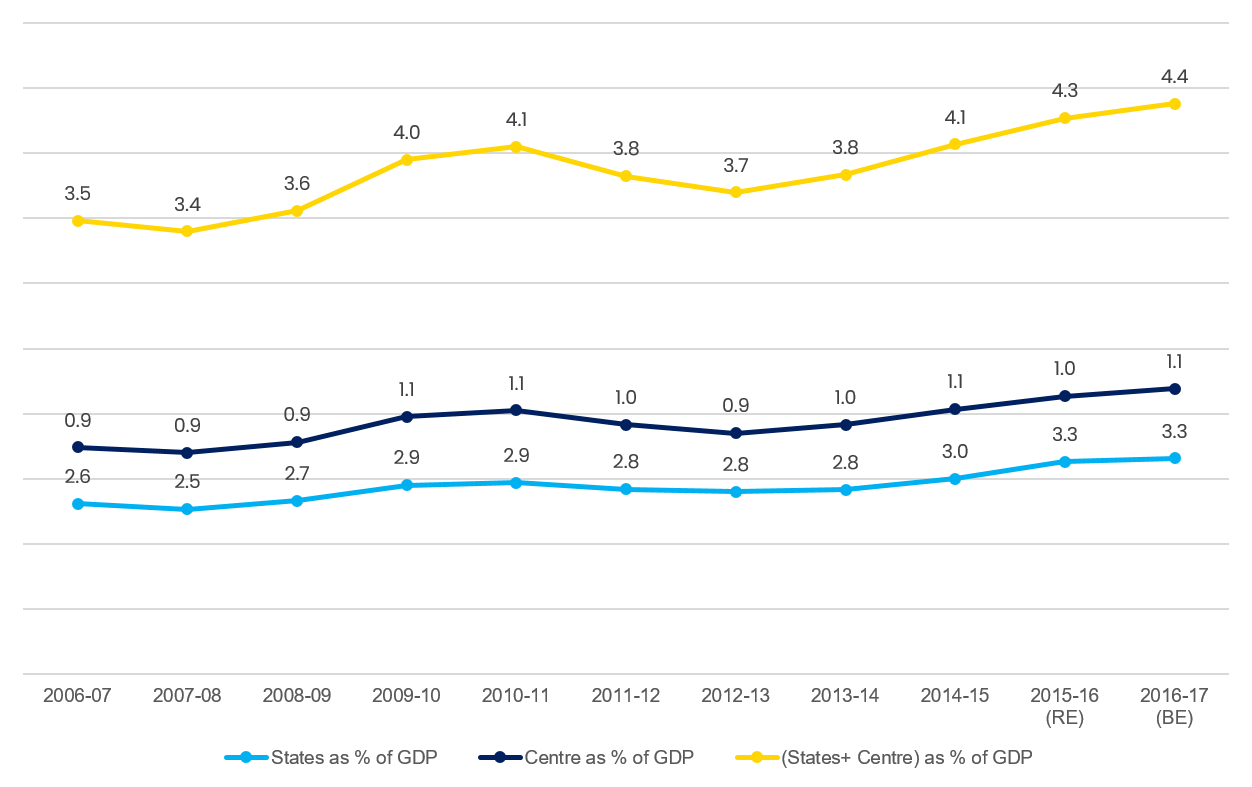Learning outcomes in Indian primary education have been consistently low. Even though children are moving up from one grade to another, few master the grade-level competencies expected of them
ASER, based on a sample of schools in all rural districts, shows that 72% of grade 5 children from rural India cannot do simple division problems. The percentage of students who can correctly do a three-digit to one-digit division problem reduced from 68% in 2010 to 43% in 2018
NAS cycle 3 and 4 for grade 5 revealed that 19 out of 31 states/union territories which participated in both cycles show a decline in language and math outcomes in government schools
The outcomes are low across all categories of schools, although the problem is particularly acute in government schools with affordable private schools performing slightly better on an average. High fee paying private schools achieve significantly better outcomes than both school types but lower than international averages*

